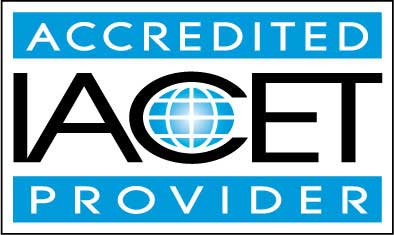Course Description
Teachers hold the critical role of shaping young minds and hearts, extending their influence beyond mere academic instructions. In today's diverse and complex classrooms, educators are often the first line of defense in identifying and addressing the multifaceted challenges that students face. Recognizing the profound impact a teacher can have, this course seeks to equip educators with a deeper understanding of their students' worlds, empowering them to foster holistic well-being.
In navigating the educational landscape, educators encounter students from a spectrum of backgrounds. Each brings a unique mosaic of experiences, dreams, and hurdles. Through this course, teachers will delve into the myriad challenges that students grapple with, from dietary concerns to the psychological toll of trauma and the dark recesses of cyberbullying. By unraveling these issues, educators can develop tailored strategies that not only counteract threats but proactively nurture resilience and positive growth.
As the tapestry of childhood evolves amidst the backdrop of a swiftly changing world, educators must remain agile and informed. This course doesn't merely present challenges; it offers actionable solutions. Whether you're reimagining a classroom layout to bolster inclusivity, sculpting an atmosphere brimming with positivity, or devising lessons that champion empathy and understanding, you'll uncover techniques to cultivate an enriched learning environment.
Moreover, the journey of an educator need not be a solitary one. There's strength in collaboration. Learn when and how to harness the expertise of fellow professionals, ensuring no child's needs are overlooked. Recognizing when to seek assistance is a testament to a teacher's commitment and wisdom.
Designed for educators, counselors, and anyone vested in the future of our youth, this course is more than just a guide; it's an invitation to be an architect of change, sculpting a brighter, safer future for every student under your care.
- Completely Online
- Self-Paced
- Printable Lessons
- Full HD Video

- 6 Months to Complete
- 24/7 Availability
- Start Anytime
- PC & Mac Compatible
- Android & iOS Friendly
- Accredited CEUs

Learning Outcomes
- Define the key components of child well-being and describe strategies educators can implement to promote physical, emotional, and cognitive development in students.
- Identify and evaluate the impact of external factors such as socioeconomic status and family circumstances on a child's overall well-being, and propose measures to mitigate negative effects within the educational setting.
- Define and describe the key types of child maltreatment, including neglect, physical abuse, emotional abuse, and sexual abuse, and their distinguishing characteristics.
- Identify and apply trauma-informed practices to create a safe and supportive classroom environment for children affected by trauma, ensuring their emotional and educational needs are met.
- Explain the role and responsibilities of a mandated reporter, demonstrate how to report suspected child abuse or neglect accurately, and ensure confidentiality and safety for all parties involved.
- Recognize and identify at least three signs of child neglect or abuse, both physical and emotional, and demonstrate how to document these observations accurately.
- Define strategies for maintaining an organized classroom environment that fosters student responsibility and engagement.
- Demonstrate understanding of the impact that classroom layout and cleanliness have on student learning outcomes and engagement levels.
- Demonstrate understanding of emergency procedures by accurately describing actions to take during specific incidents, such as natural disasters or active shooter situations, ensuring both personal and peer safety.
- Identify key risk management strategies for ensuring safety in school environments, including emergency preparedness, to minimize risks and foster a secure learning space.
- Demonstrate effective communication strategies with parents and guardians regarding the symptoms and management of common childhood illnesses to control potential outbreaks in educational environments.#
- Identify and differentiate between the symptoms of bacterial and viral conjunctivitis to determine appropriate hygiene and intervention measures for prevention in school settings.
- Define how infectious agents spread within school environments, emphasizing the role of direct and indirect contact.
- Demonstrate mastery of lesson content at levels of 70% or higher.
Assessment Guide
| Assessment | Points |
|---|---|
| Motives for Taking this Course | 2 points |
| Lesson 1 Exam | 10 points |
| Lesson 1 Review Exam | 9 points |
| Lesson 2 Activity | 1 points |
| Lesson 2 Exam | 10 points |
| Lesson 3 Activity | 1 points |
| Lesson 3 Exam | 10 points |
| Lesson 4 Exam | 10 points |
| Lesson 4 Review Exam | 12 points |
| Lesson 5 Exam | 9 points |
| Lesson 6 Exam | 10 points |
| Lesson 7 Activity | 1 points |
| Lesson 7 Exam | 10 points |
| Lesson 7 Review Exam | 18 points |
| Lesson 8 Exam | 10 points |
| Lesson 8 Review Exam | 20 points |
| Lesson 9 Exam | 10 points |
| Lesson 9 Review Exam | 14 points |
| Lesson 10 Activity | 1 points |
| Lesson 10 Exam | 9 points |
| Lesson 10 Review Exam | 9 points |
| Lesson 11 Activity | 1 points |
| Lesson 11 Exam | 8 points |
| Lesson 11 Review Exam | 15 points |
| Lesson 12 Exam | 10 points |
| Lesson 12 Review Exam | 10 points |
| Lesson 13 Exam | 10 points |
| Lesson 14 Exam | 10 points |
| Lesson 14 Review Exam | 17 points |
| Lesson 15 Exam | 10 points |
| The Final Exam | 68 points |
| Lesson 15 Review Exam | 16 points |


